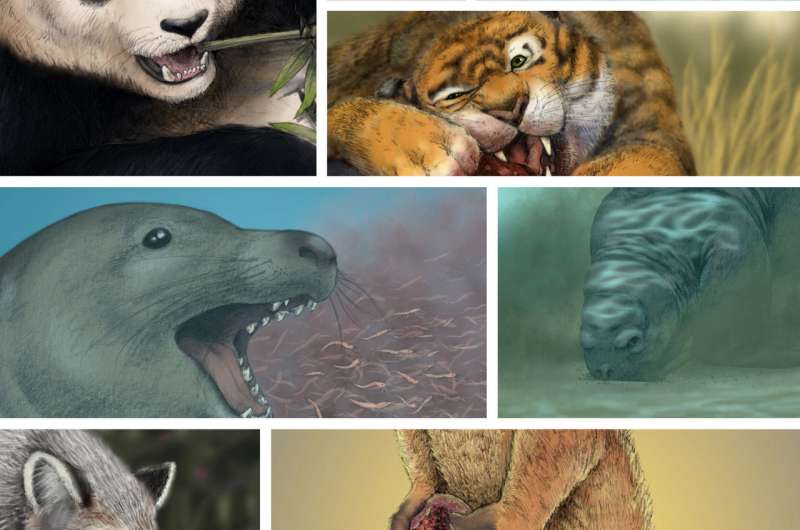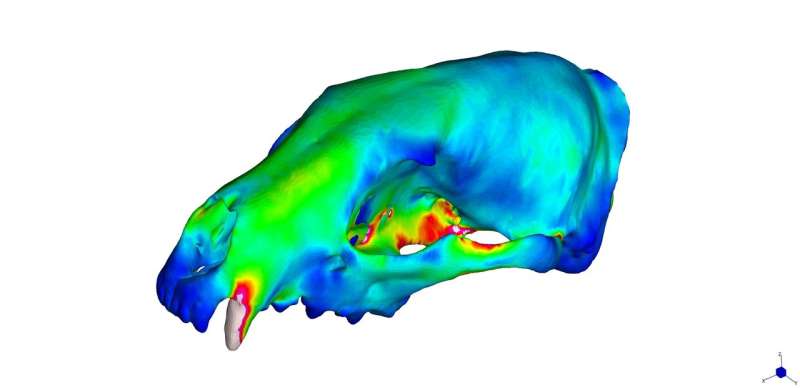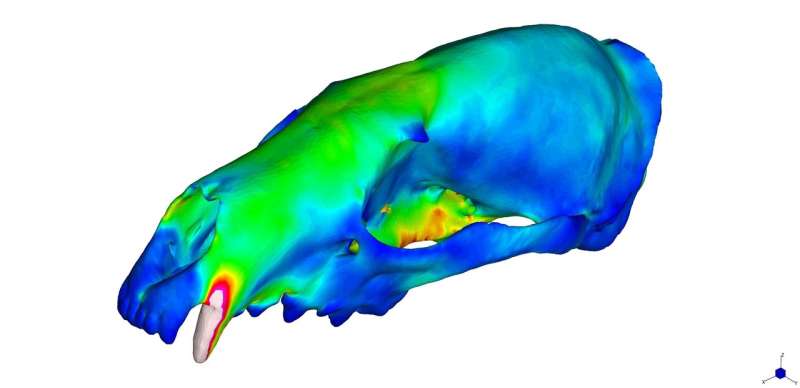Study punctures 'you are what you eat' paradigm for carnivore skull shape

From dogs to seals to cats, members of the mammalian order Carnivora can vary greatly from one species to another. But for the most part, their skulls all tend to take on some variant of just a few shapes-a pattern scientists have long attributed to shared diets. New research led by the American Museum of Natural History and the University at Buffalo reveals that the evolution of skull shape in this group is actually much more complex and is influenced by nondietary factors. The study is published today in the journal Science Advances.
"For years, conventional thought surrounding carnivoran skull shape followed the 'you are what you eat' paradigm, where distantly related species evolve similar skulls because of shared dietary needs," said the study's lead author Z. Jack Tseng, an assistant professor of pathology and anatomical sciences in the Jacobs School of Medicine and Biomedical Sciences at the University at Buffalo, and a research associate at the Museum. "We found that to be a dramatic oversimplification."
With data from more than 50 living species, Tseng and coauthor John Flynn, the Frick Curator of Fossil Mammals in the Museum's Division of Paleontology, created sophisticated shape and biomechanical models of skulls of carnivorans with different diets, ranging broadly from strict meat-eaters (carnivores such as lions) to plant-eaters (herbivores such as the giant panda) and less-picky eaters (omnivores such as raccoons). The models enabled them to test how shape and size correlate to such factors as the species' habitat, what time of day it is active, what it eats, where it sits in the food chain, its life expectancy, and how it moves, among others. The combination of digital modeling and biomechanical analysis allowed researchers to pinpoint specific shape changes related to those ecological factors, and then to test the functional importance of those shape changes using bite simulations. The results show, for the first time, that nondietary factors significantly influence both skull form and function in carnivoran species. Two factors in particular-age at sexual maturity and average precipitation of the environment-show particularly strong influences on bite performance of carnivoran skulls, comparable to or exceeding influences from dietary factors.

"You wouldn't think that how many raindrops fall on an animal's head each year could tell you what their skull looks like, so that was definitely an unexpected finding," Flynn said. "But this precipitation factor is probably a proxy for something else having to do with the species' environment. For example, a wet forest might have greater food availability than a dry habitat, and that would influence the skull's shape. These new findings overturn longstanding assumptions that diet controls most aspects of skull anatomy, providing new leads that we still need to explore in more depth."
The authors expect this new analytical approach to be used for studying similarly complex form-function relationships in other animal groups.
"This could have extremely broad and important implications for how we interpret feeding adaptations in extinct species in general," Tseng said.

More information: Z.J. Tseng el al., "Structure-function covariation with nonfeeding ecological variables influences evolution of feeding specialization in Carnivora," Science Advances (2018). DOI: 10.1126/sciadv.aao5441 , advances.sciencemag.org/content/4/2/eaao5441
Journal information: Science Advances
Provided by American Museum of Natural History





















